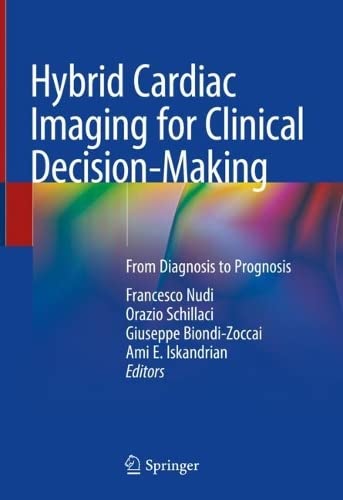Hybrid Cardiac Imaging for Clinical Decision-Making: From Diagnosis to Prognosis 2022
دانلود کتاب پزشکی تصویربرداری هیبریدی قلب برای تصمیم گیری بالینی: از تشخیص تا پیش آگهی
| نویسنده |
Ami E. Iskandrian, Francesco Nudi, Giuseppe Biondi-Zoccai, Orazio Schillaci |
|---|
| تعداد صفحهها |
222 |
|---|---|
| نوع فایل |
|
| حجم |
18 Mb |
| سال انتشار |
2022 |
89,000 تومان
انجام هر گونه آزمایش تشخیصی در پزشکی همیشه این بوده است که با کمترین زحمت، مواجهه و ناراحتی و در عین حال با کمترین احتمال خطا، وضعیت بیمار را به درستی تشخیص دهیم.
امکان آزمایش قبلی مفید است، اما اغلب نادرست است و به طور موثر پروفایل خطر بیمار را بیش از حد برآورد می کند. در یک هدف پیشگیرانه گسترده تر، مراحل بیماری، شروع، پیشرفت و عوارض باید در نظر گرفته شود. ارزش اخباری منفی که بسیار مهم است، به نوبه خود محدودیت های اصلی خود را در شناسایی بیمار سالم دارد، یعنی فردی که به هیچ گروهی از بیماران که از نظر پیشگیری در آن عمل می کنیم، تعلق ندارد.
در سندرم های کرونری، هدف در عوض ارزیابی بیماری عروق کرونر قلب، از انواع خفیف تا گسترده تر و قابل توجه تر است. برای این منظور لازم است از پارامترهایی استفاده شود که جنبه های مختلف و مکمل را بررسی می کند: تنگی، ایسکمی، تشکیل پلاک آترواسکلروتیک، فرآیندهای متابولیکی به ویژه حیات و آپوپتوز و وجود فرآیندهای التهابی.
امکان “پیوستن” به معاینات که جنبههای مختلف را بررسی میکنند، به لطف تصویربرداری ترکیبی از قبل وجود دارد، به بیمار این امکان را میدهد که نه تنها از نقطهنظر تشخیصی، بلکه با یک درمان پیشآگهی و شخصی به طور فزایندهای متمایز شود. انتخاب
Performing any diagnostic test in medicine is always a matter of trying to get the condition of the patient diagnosed properly with the least effort, exposure, discomfort and at the same time with the lowest possible error probability.
Pre-test probability is helpful but often imprecise, effectively overestimating the patient's risk profile. In a broader prevention objective, the phases of a disease, its onset, progression, and complications must be taken into account. The negative predictive value, which is so important, has in turn its main limitation in identifying the healthy patient, that is, the one who does not belong to any cluster of patients in which we would act in terms of prevention.
In coronary syndromes, the goal is instead to evaluate coronary heart disease, from mild to more extensive and significant forms. For this purpose, it is necessary to use parameters that investigate different and complementary aspects: stenosis, ischemia, the morphology of the atherosclerotic plaque, metabolic processes, in particular vitality and apoptosis, the presence of inflammatory processes.
The possibility, already present thanks to Hybrid Imaging, of 'joining’ exams that study different aspects, will allow the patient to be increasingly characterized not only from a diagnostic point of view but also from a prognostic and personalized therapeutic choice.




